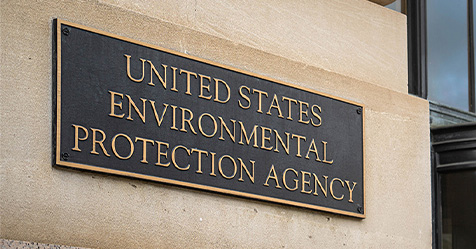Is there a difference between cleaning a restroom in a health care facility, such as a hospital or long-term care facility, and in another sector, such as a school? Initially, one might think the answer is no.
After all, in any restroom, the cleaner or custodian uses chemicals to kill bacteria and sanitize or disinfect surfaces, thus achieving the desired end result of a sanitary or disinfected and aesthetically pleasing room. Additionally, in each case, there is a desire is to limit the spread of infectious and transmittable diseases.
So, if restroom cleaning is restroom cleaning wherever you are, what then separates health care restroom cleaning from all of the other sectors?
Building Occupants
First, let’s examine the environmental conditions faced by those in health care vs. the conditions faced by those in other sectors, such as schools, offices, or industrial settings.
It used to be that restroom cleaning in nonhealth care sectors was performed primarily for aesthetic purposes. That has changed drastically with the advent of knowledge behind the spread of infection related to biohazards. That being said, answering the question of whether or not health care restrooms differ from those in a school, office, restaurant, or other public place is more complex that it looks.
Other sectors, such as those mentioned above, have tenants who are—for the most part—healthy. Yes, an individual may come in to work or school with the common cold or a flu bug; however, these individuals have the ability to call in sick due to illness.
This differs from hospitals or long-term care settings where patients’ health is potentially compromised, making them more susceptible to germs and bacteria that can further compromise their health or even cause death.
While it is important to disinfect all surfaces in a hospital, it is critical to regularly clean and disinfect hospital restrooms due to the ease with which bodily fluids and bacteria can transmit. In addition, many hospitals—specifically older facilities that may have less modern designs—allow for their patients to share a restroom; it is therefore a priority to ensure the area has been properly treated.
Health Care-Associated Infections
Even those who are otherwise healthy and come in for care can be infected by bacteria and obtain a health care-associated infection (HAI).
Clostridium difficile (C. diff) is one such HAI that has reached epidemic proportions. In examining the disease, the U.S. Centers for Disease Control and Prevention (CDC) noted that, in 2011, C. diff was responsible for approximately a half million infections in the United States; approximately 29,000 cases resulted in death within 30 days of contracting this disease.
Contracting an HAI isn’t always covered by health insurance, making it even more critical that prevention methods are part of daily routines carried out by staff. Additionally, a health care organization that endures an HAI outbreak has to endure the negative impact this can have on both customer perception of service as well as the cost of care. That is one reason to implement a complete and thorough cleaning process for restrooms, including use of the appropriate disinfectant, and ensure the reduction or elimination of the spread of infection.
Michael Burke, an environmental services manager for North Memorial Medical Center, a large hospital in Minneapolis, MN, trains and expects his staff to disinfect all high-touch points in each hospital restroom as though it were in isolation. Burke has written cleaning specifications to this level for all restrooms, as well as validating cleaning techniques when checking on the cleaning competency of staff members.
Isolation areas obviously demand the highest degree of contamination-free cleaning. Treating restrooms with the same degree of care as one would treat an isolation room ensures the highest level of decontamination.
Inspection Tools and Details
Health care facilities may use ultraviolet (UV) lighting to kill bacteria in restrooms and/or use fogger-type disinfectants to completely disinfect all surfaces. However, it’s possible the most important difference between the restroom of a health care facility and that of any other sector is in the monitoring of quality levels.
Generally speaking, a nonhealth care sector restroom is going to receive a generic quality inspection. By this, I mean a visual inspection of whether the work is complete or not. In the health care sector, this is almost never the case.
Health care facilities use a variety of tools to measure not only the quality of cleaning as it relates to appearance, but also to measure whether a surface has been disinfected. Some may use adenosine triphosphate (ATP) testing to determine whether all living organisms have been killed on a specific surface. Others may rely on fluorescent gel testing to determine whether a surface has been cleaned. If your processes and procedures are correct and followed, these types of tests—when done randomly and often—can help to validate the efficacy of the systems and work processes you have in place.
Infection control specialists in health care settings rely on the data gleaned from these tests in a variety of ways. Examples include risk assessment, mitigating procedures (align these with the metrics on an organizational scorecard), and communicating the effectiveness of their facilities to the customer base.
What’s the Difference?
Across the entire cleaning industry, there is a concerted effort to re-engineer cleaning of a restroom to the level of the science it has become. No longer is it sufficient to just “clean” a restroom. Cleaning is becoming much more sophisticated, with science and technology permeating the entire industry. Nowhere is this more evident than in restroom cleaning. New chemicals and equipment are now available to help in the fight to control or eliminate harmful bacteria.
Along with these advances in technology, there are also now recommended tasks and times for tasks, such as those found in ISSA’s 612 Cleaning Times. These can provide a benchmark for the types of activities necessary to provide a healthy and sanitary restroom.
In summary, the differences in cleaning restrooms are negligible between sectors. The primary differences are in the types of building occupants and how health care staff monitor cleaning results.
While it’s true that all sectors want a clean and healthy environment, including in their restrooms, the health care sector, by its nature, is required to be fastidious in the monitoring of quality and infection control in restroom cleaning.
Editor’s note: Special thanks to Michael Burke for his insight into the world of environmental services, and for his contribution as an editor to this article. As the environmental service manager at North Memorial Medical Center, he oversees housekeeping, linen services, regulatory waste compliance, patient transport, parking, and valet and shuttle services.




